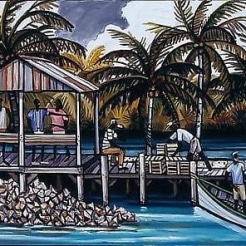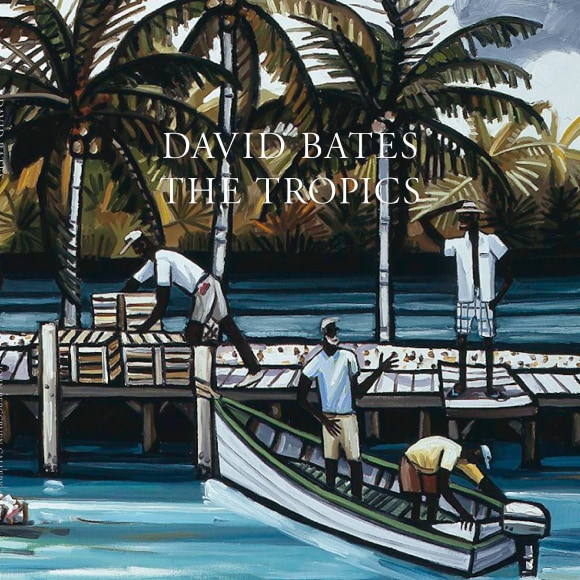
Steeped in experience and tempered by personal memory, the seventeen new paintings included in this exhibition extend Bates's penchant for creating geographically specific bodies of work one step further. As seen with the Grassy Lake series of the 1980s and 2004-2005, and the Galveston Series from the late 1980s and early 1990s, Bates's latest paintings take the Caribbean, particularly Turneffe Island off the coast of Belize and the Bahamian Islands of Andros and Abaco, as the watery back drops for his worldly drama. It is in this setting that his weathered fishermen, much like the Galveston fisherman and the venerable guides of Grassy Lake in his previous works, are fully realized as timeless protagonists. According to Bates, "These pictures are really analogies made out of chunks of color. They're certainly not literal depictions. I work from spot drawings and color notes, rarely from photographs. But you know, in the tropics, there's always real people living real lives in tune with the rhythm of the wind and water. An exotic landscape marinated in the sun with a light scent of salt, sea, citrus and a splash of rum. I try to capture this feeling. I want that visceral energy in the pictures." Carl Little writes, "Relying on memory might distort the truth of a specific visage or locale, but it also adds a level of abstraction, a quality [David Bates] admires in folk art and which he emulates." Abstraction in folk art is among one of the many tendencies that has had a major affect on Bates's career. African American Folk artists, including Bill Traylor and William Hawkins, as well as early-American Modernist Marsden Hartley, Van Gogh, Cezanne, Picasso, Matisse and Homer are also influences that have appeared in Bates's work throughout the years, sometimes meshing together within a single canvas. This sophisticated blending of the soulful traditions of the American south with the canonized practices of European painting is apparent in works like Fisherman's Lunch (2008) - which is a nod to the Duke of Urbino's portrait by the Italian Renaissance artist, Piero della Francesca - yet is more subconscious than deliberate. "For me painting is pretty direct," states Bates, "You see a subject that you think is incredible either emotionally, psychologically, or purely aesthetically, and then you slather paint around until the painting has the dignity, integrity, and beauty of that subject."

